・必要なもの
ハンダもやったことないですが、ESP-WROOM-02を買ってみました。
どんなもの買ってよいのかもわからず。。。下記のサイト参考にさせて頂きました。
Eleclog
※とても参考になります。勉強になります。
筆者の方が作成したAKIcart!(すごい便利)
「ESP-WROOM-02でミニマルなIRKitクローンを作る」のAKICartが"公開"になっているので
そのまま貼らせて頂きます。
■赤外線送受信のためのセットととして以下を購入(全部買っておけば間違いないっす)
ESP-WROOM-02でミニマルなIRKitクローンを作る(AKIcart)
 650円と激安なので、4個くらい買ってみました。
650円と激安なので、4個くらい買ってみました。
■シリアル通信のため購入
ESP8266にプログラムを書き込むためにシリアルインターフェイスモジュールも合わせて購入しました。
microUSBから電力も供給可能とのことで。
FT231X USBシリアル変換モジュール
750円 意外と高い
■LEDチカチカのため購入
LEDを光らせるために以下を購入しました。
高輝度5mm赤色LED 7cd60度 (10個入)
10個で150円 安い
・ハンダ
| 用意したもの | リンク | 値段 | コメント |
|---|---|---|---|
| goot 電子工作用はんだこてセット X-2000E | goot 電子工作用はんだこてセット X-2000E | 1409円 | Amazonで購入 |
| 色々ついてるので、上記のセット買いました。 |
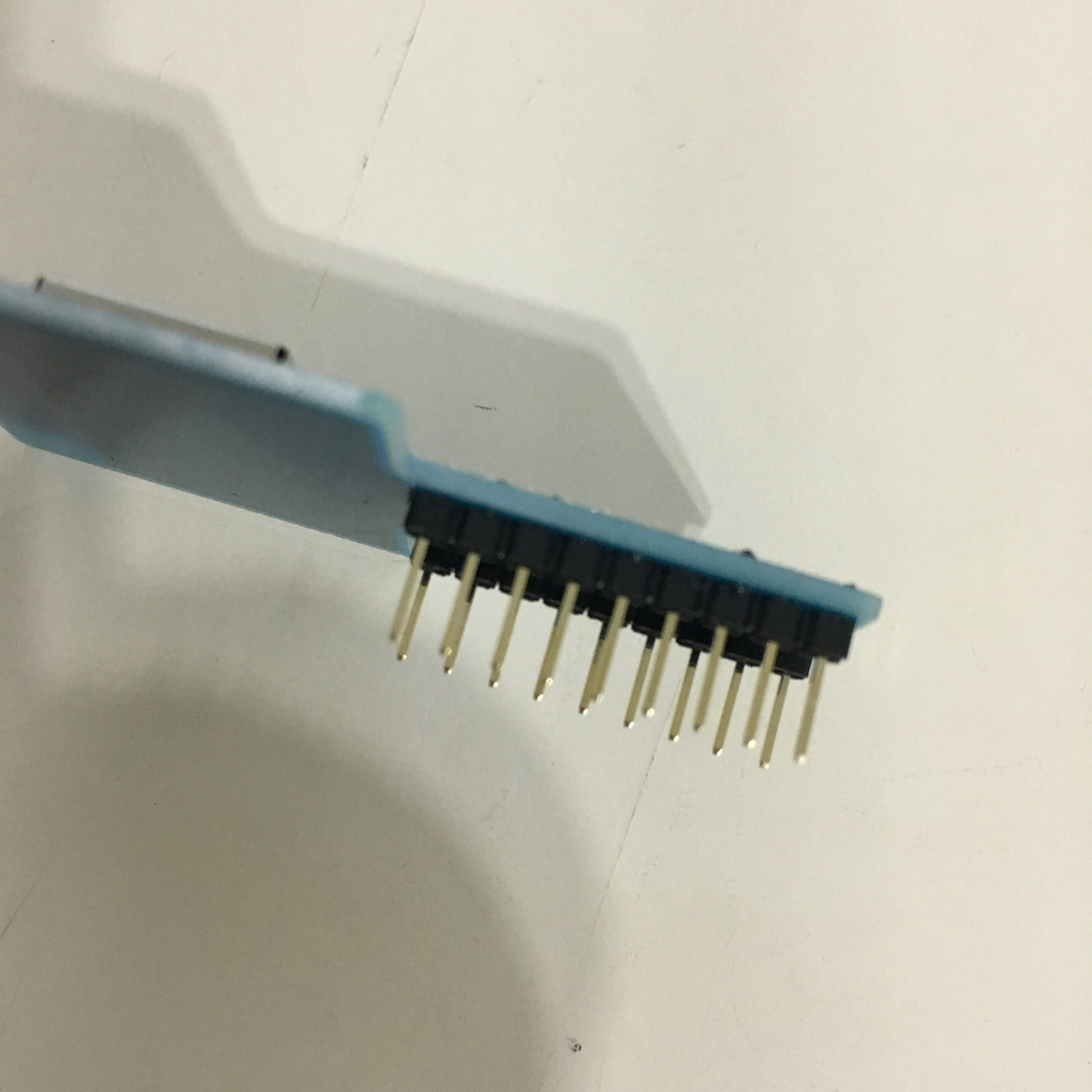 |
中のピンは左記のようにしましたが、合っているかわからんです。 |
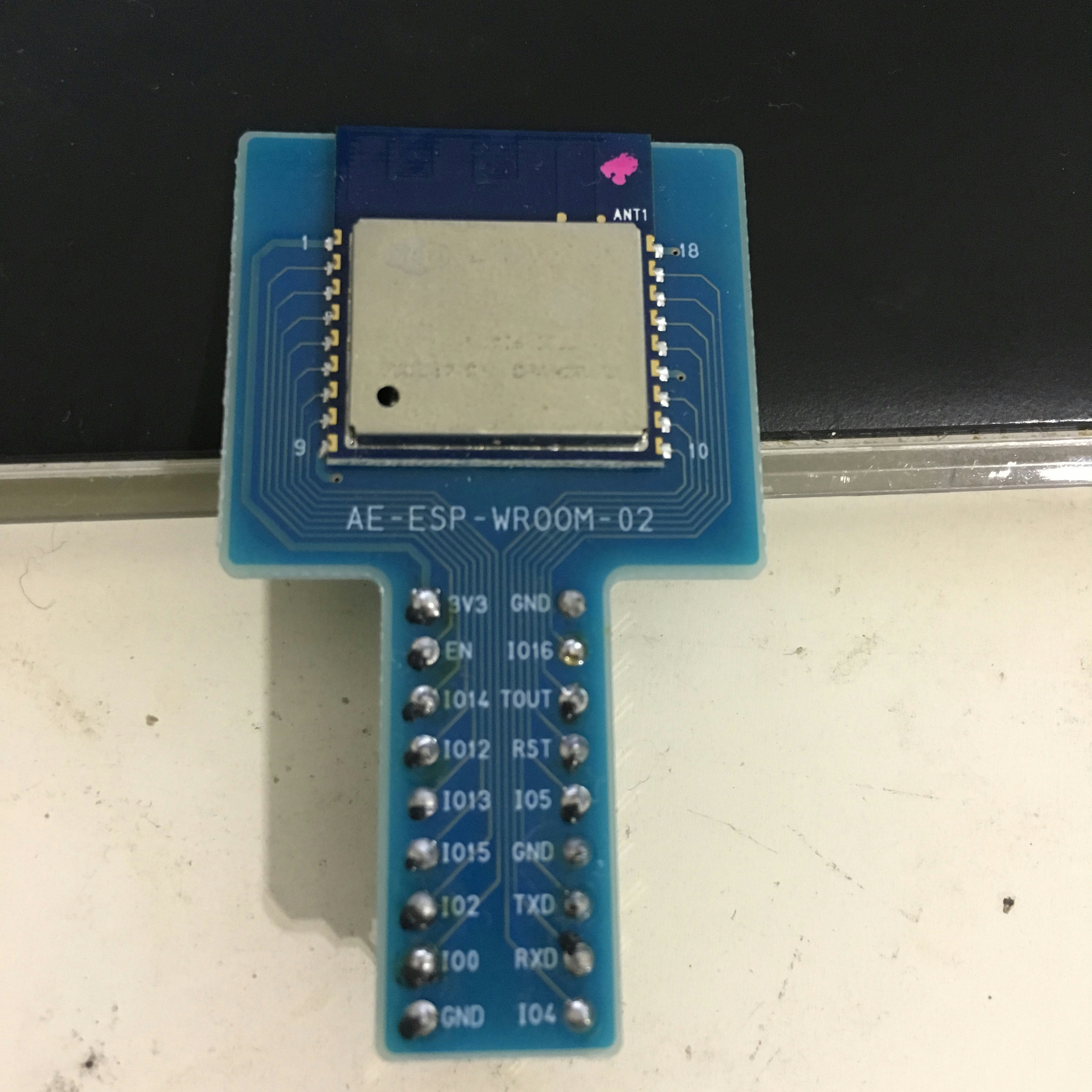 |
初めてながら、出来上がったので一安心。。ところどころ黒いですが。。 |
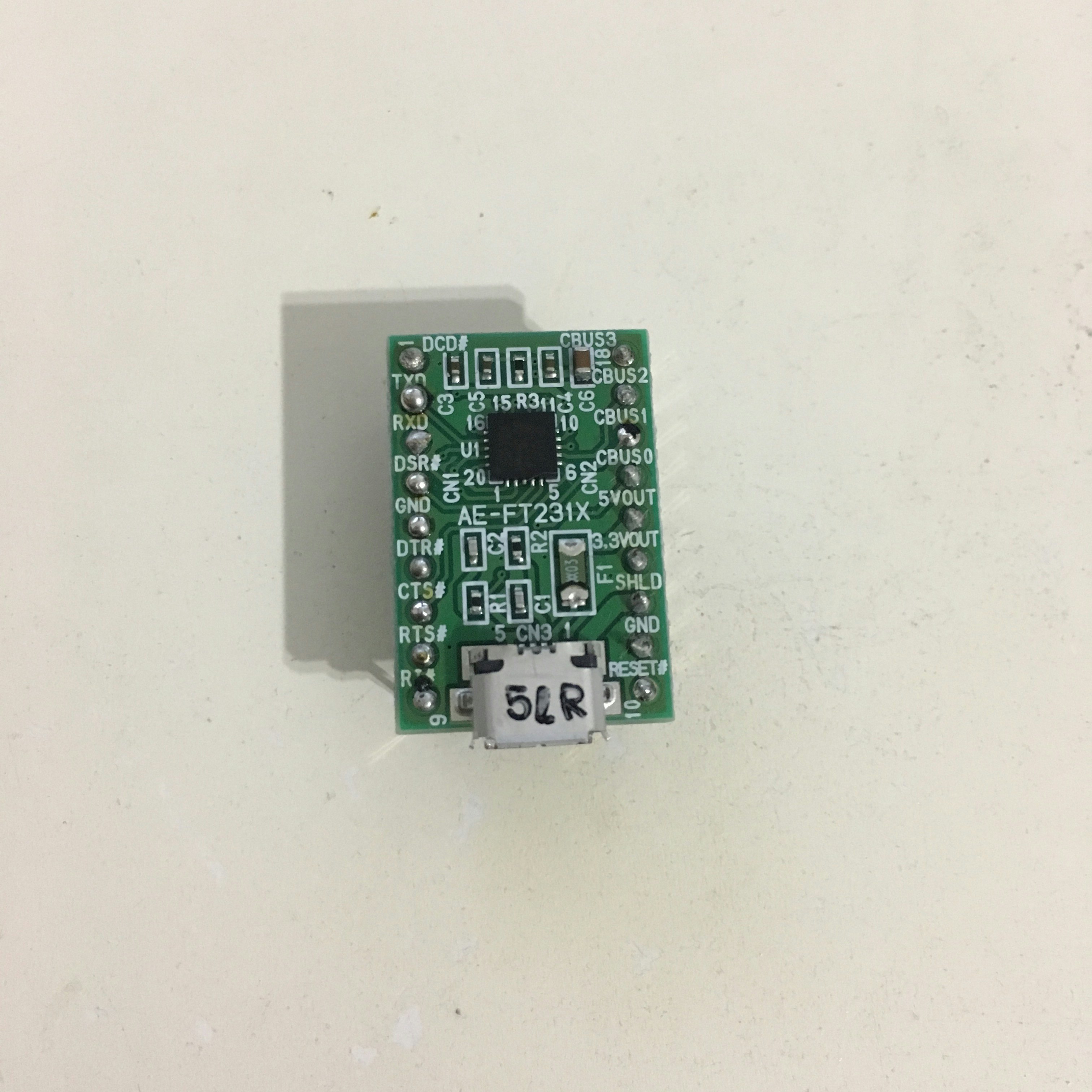 |
こっちはシリアル |
・ブレッドボードへ接続・配線図
ブレッドボードに繋いでみます。
gpioから出力させ、LED光らせてみます。
 ※つなぎ方は適当なのでごめんなさい
※抵抗いくつのものか忘れました。。。
※つなぎ方は適当なのでごめんなさい
※抵抗いくつのものか忘れました。。。
・プログラム
先人の先輩の方のプログラムを参考にさせて頂きました。
/*
* This sketch demonstrates how to set up a simple HTTP-like server.
* The server will set a GPIO pin depending on the request
* http://server_ip/gpio/0 will set the GPIO2 low,
* http://server_ip/gpio/1 will set the GPIO2 high
* server_ip is the IP address of the ESP8266 module, will be
* printed to Serial when the module is connected.
*/
# include <ESP8266WiFi.h>
const char* ssid = "your-ssid";
const char* password = "your-password";
// Create an instance of the server
// specify the port to listen on as an argument
WiFiServer server(80);
void setup() {
Serial.begin(115200);
delay(10);
// prepare GPIO2
pinMode(2, OUTPUT);
digitalWrite(2, 0);
// Connect to WiFi network
Serial.println();
Serial.println();
Serial.print("Connecting to ");
Serial.println(ssid);
WiFi.begin(ssid, password);
while (WiFi.status() != WL_CONNECTED) {
delay(500);
Serial.print(".");
}
Serial.println("");
Serial.println("WiFi connected");
// Start the server
server.begin();
Serial.println("Server started");
// Print the IP address
Serial.println(WiFi.localIP());
}
void loop() {
// Check if a client has connected
WiFiClient client = server.available();
if (!client) {
return;
}
// Wait until the client sends some data
Serial.println("new client");
while(!client.available()){
delay(1);
}
// Read the first line of the request
String req = client.readStringUntil('\r');
Serial.println(req);
client.flush();
// Match the request
int val;
if (req.indexOf("/gpio/0") != -1)
val = 0;
else if (req.indexOf("/gpio/1") != -1)
val = 1;
else {
Serial.println("invalid request");
client.stop();
return;
}
// Set GPIO2 according to the request
digitalWrite(2, val);
client.flush();
// Prepare the response
String s = "HTTP/1.1 200 OK\r\nContent-Type: text/html\r\n\r\n<!DOCTYPE HTML>\r\n<html>\r\nGPIO is now ";
s += (val)?"high":"low";
s += "</html>\n";
// Send the response to the client
client.print(s);
delay(1);
Serial.println("Client disonnected");
// The client will actually be disconnected
// when the function returns and 'client' object is detroyed
}
| 項目 | 変更箇所 | コメント |
|---|---|---|
| ■GPIO関連 | // prepare GPIO2 pinMode(4, OUTPUT); digitalWrite(4, 0); // Set GPIO2 according to the request digitalWrite(4, val); |
出力するGPIOを変更。今回は、2から4に変更しています。 |
| ■SSID関連 | const char* ssid = "your-ssid"; const char* password = "your-password"; |
自分の環境に合わせて |
・ESP8266へ書き込み
Arduino IDEをインストールして書き込みます。
Arduino使い方は、調べればすぐ出てきますので割愛します。
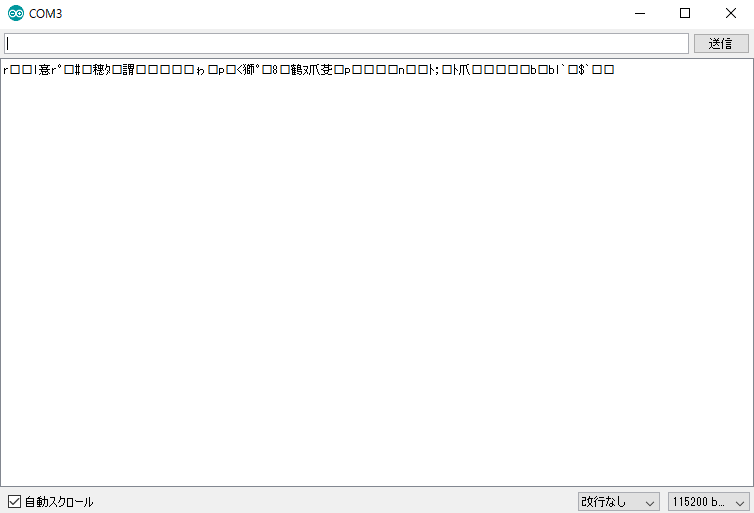 |
RSTとGNDをつなぐと、左記のような文字が出力されます。その後、接続したジャンパーコードは抜きます。 |
 |
書き込み終わって |
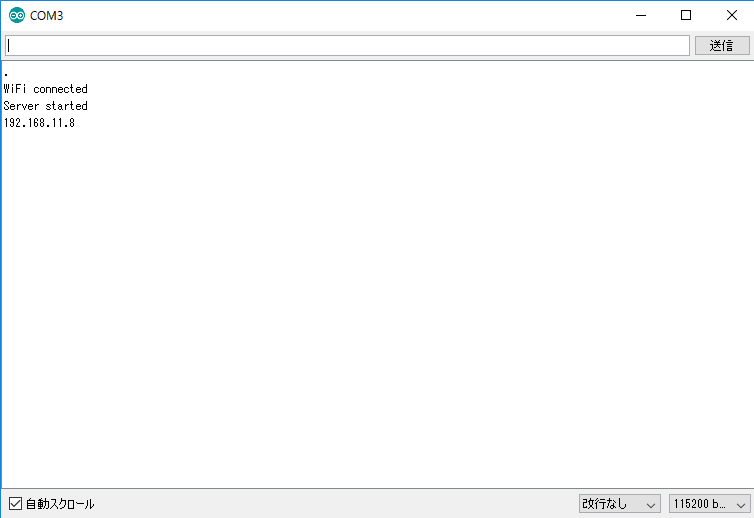 |
左記のように取得したIPアドレスが表示されればOK |
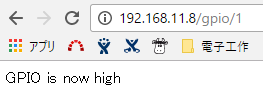 |
ブラウザで http://表示されたIP/gpio/1 にアクセスすれば |
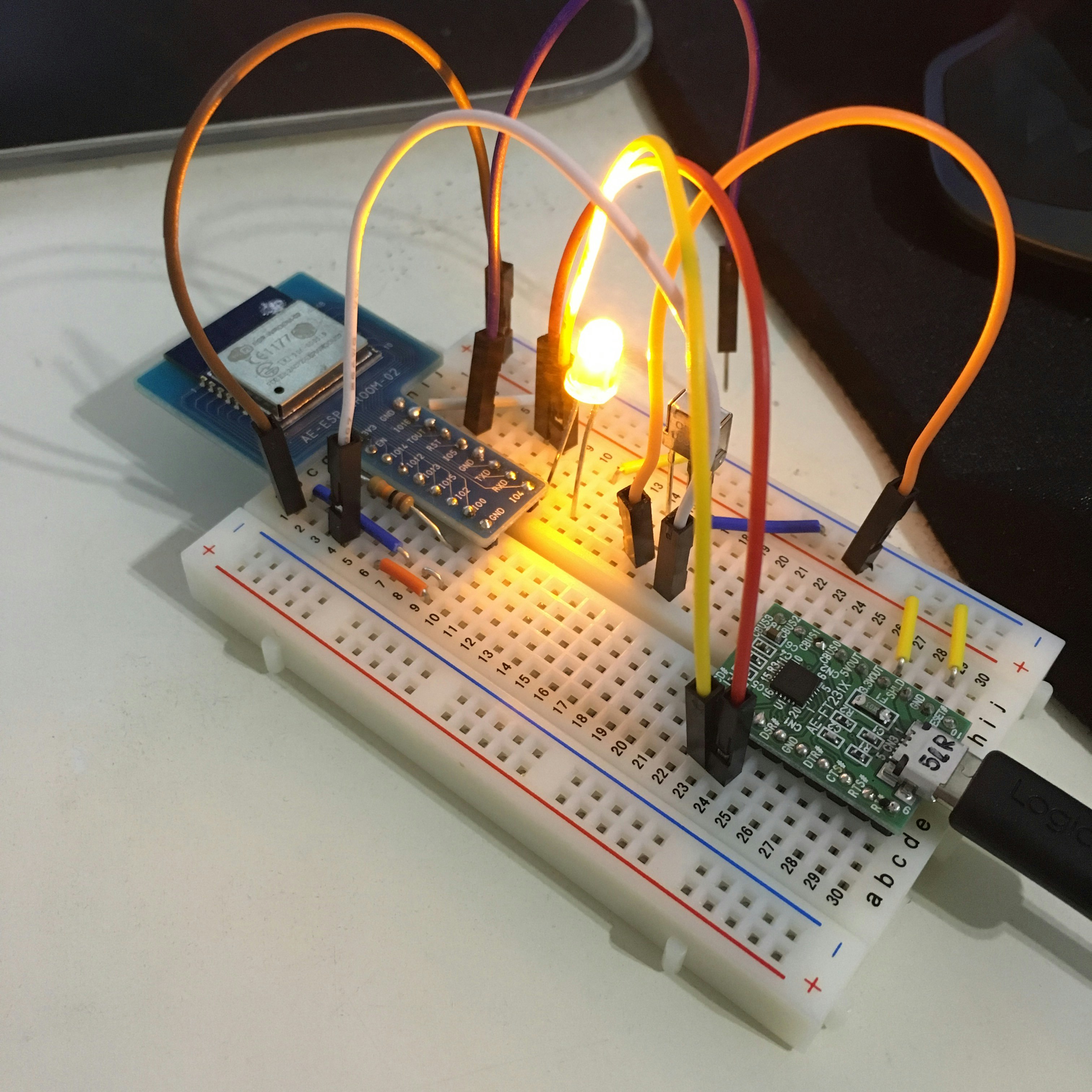 |
指定したGPIOから出力して、LEDが光ります!(感動。。。)逆に、/gpio/0 にアクセスすれば、LEDが消灯するってことです。 |
・おわりに
単純なLEDチカチカでしたが、夢が広がりました+電子工作の楽しさを改めて感じました。
できているものをいじるのと、作ったものをいじるのは全然違うです。